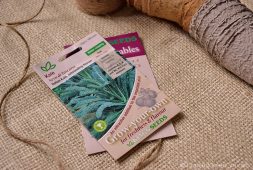10 Stunning Houseplants That Are Safe for Cats & Dogs
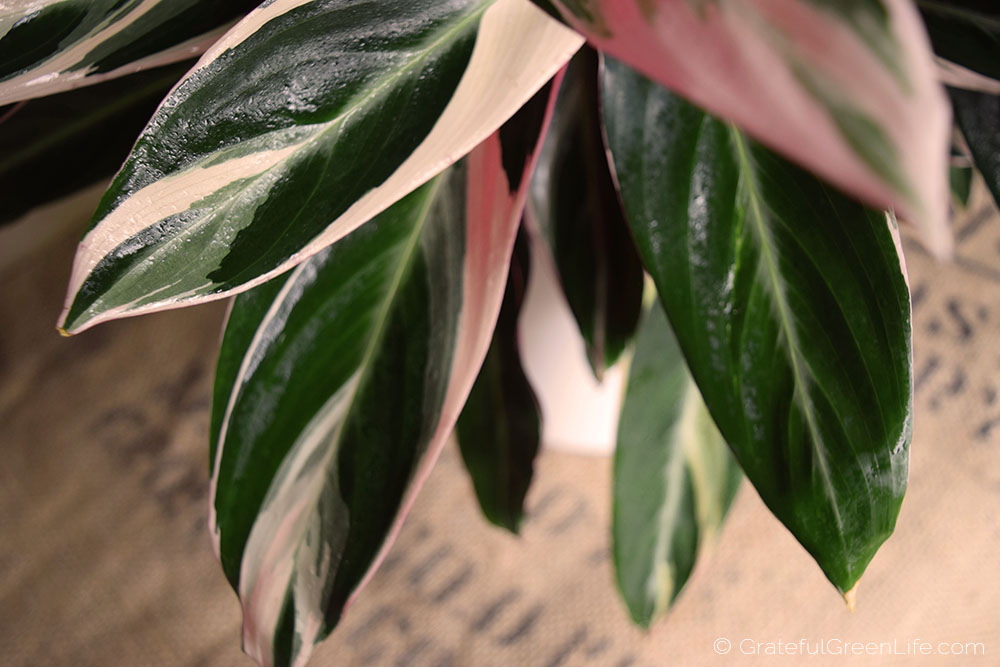
It’s no secret that I’m fond of my foliage, especially when it comes to house plants!
I’m always lusting after some gorgeous new greenery to add to my indoor jungle, and with so many stunning plants to choose from, it’s hard not to want them all!
Before getting too carried away though, it’s worth remembering that there are many things to consider, when adding a new plant to your home.
Choosing Your New Houseplant
Whichever plant you choose, you’ll want to provide it with a suitable level of light, space, humidity, temperature, water, feed and love – and some plants can be absolute divas, if you don’t get these things right! (Alocasia Polly, I’m looking at you!)
It’s also important to know whether or not a plant will be harmful, to the animals we share our lives with.
Sadly, many popular house plants (including the Monstera Deliciosa, and the aforementioned Alocasia) are toxic to cats and dogs, and while some plants will cause a nasty stomach upset, others can lead to serious complications and death!
Naturally, my four lovely cats are my top priority, so whenever I adopt a new houseplant I always ensure that it’s safe for my kitties, or that it’ll be happy living in my tiny office, which is completely out-of-bounds to my cats!
To check whether a plant is toxic, you can search the ASPCA database here. Not every houseplant is listed on their website, but their information is very reputable.
In the meantime, here are some ideas for beautiful houseplants, that are non-toxic to cats and dogs!
Please note: I’m not a veterinarian and although these plants are listed as safe by the ASPCA, it’s possible that an individual animal may still experience an allergic reaction.
Top 10 Pet-Friendly Houseplants
Calathea Makoyana (Peacock Plant)

Calathea’s are some of the most beautiful and diverse, pet-friendly houseplants you can find – and the Calathea Makoyana is definitely a personal favourite of mine!
Also known as the Peacock Plant, this stunning houseplant boasts thicker leaves with a slightly-raised texture, and features an incredibly eye-catching pattern.
What’s great about this plant, is that it tends to be a bit hardier than many other types of Calathea, meaning it’s more pest-resistant and is also more forgiving of an unreliable watering schedule.
In nature, Calathea’s grow on the forest floor, so they’re best kept out of direct sunlight and in a slightly more humid environment.
To increase humidity you can mist your plants daily, position similar plants together in a huddle, and/or stand them on a pebble tray.
Fittonia Verschaffeltii (Nerve Plant)

These striking plants (known as Nerve Plants) come in a huge assortment of colours and variations, with some having pink, red, yellow or even silver leaves or veins!
In the UK, these common houseplants are usually very cheap to buy, but be warned – they do love a lot of humidity, and often thrive best in a terrarium! (I don’t keep mine under glass, but they’d probably be happier if I did!)
Nerve plants usually remain very compact, and should always be kept out of direct sunlight, as they’re particularly sensitive to leaf burn!
Asplenium Nidus ‘Crispy Wave’ (Birds Nest Fern)

You may associate ferns with the great outdoors (I know I do!), but these purifying plants make wonderful houseplants too!
There are many different types of fern to choose from (from voluminous Boston Ferns to billowy Blue Star Ferns) but I’m particularly fond of Aspleniums, as I adore their thick, structural leaves – especially those found on the ‘Crispy Wave’ cultivar, seen above!
Because ferns thrive best in a shady, damp environment, they often do well in bathrooms, and, just like Nerve Plants, they’re also very cheap to buy.
Calathea Lancifolia (Rattlesnake Plant)

Here we have another eye-catching variety of Calathea, that really commands your attention!
The Calathea Lancifolia (aka the Rattlesnake Plant) has beautifully smooth, elongated leaves, which have a dark red underside and feature an adorable pattern on top.
Like the Calathea Makoyana, this stunning houseplant is very easy-to-keep and likes indirect light, along with a little extra humidity.
Hoya Carnosa ‘Tricolour’

Hoya’s have certainly sky-rocketed in popularity recently – and with good reason too!
They have gorgeous climbing (or sometimes trailing) foliage, and form beautiful clusters of highly perfumed flowers.
Due to their semi-succulent nature, they’re extremely easy to look after, and don’t need watering (or re-potting) as frequently as many other houseplants do.
The Carnosa ‘Tricolour’ is an especially popular Hoya, due to the pink tones in its leaves. It is also cheaper than the rarer varieties of Hoya, and can be easily propagated from cuttings.
Please note: The Hoya Kerrii that’s sold as a single, heart-shaped leaf around valentines day should generally be avoided, as they rarely grow into full plants.
Calathea Zebrina

Yep, I know! It’s another Calathea – but this one’s not to be missed!
The lime-green foliage of the Calathea Zebrina is extremely eye-catching and its stripey leaves have a wonderful, velvety texture!
This incredible houseplant grows pretty fast, but is a little harder to keep happy as it’s less tolerant to drought, likes more humidity, dislikes bright sunlight, but still prefers a brighter spot than the other Calatheas I’ve mentioned.
I don’t know about you, but I think this plant is such a show-stopper, that the extra TLC is worth it!
Maranta Leuconeura Var. Erythroneura (Herringbone Plant)

There are various different types of Maranta Leuconeura, but this one is definitely the most striking, fun and fast-growing!
Maranta’s are also known as ‘Prayer Plants’ because at night they move their leaves upwards, and appear as if they’re praying! (If you listen closely during this time, you might even hear your plant moving!)
This quirky plant grows extremely quickly, is super easy-to-care-for and enjoys moderate humidity as well as indirect light.
Peperomia Caperata ‘Schumi Red’
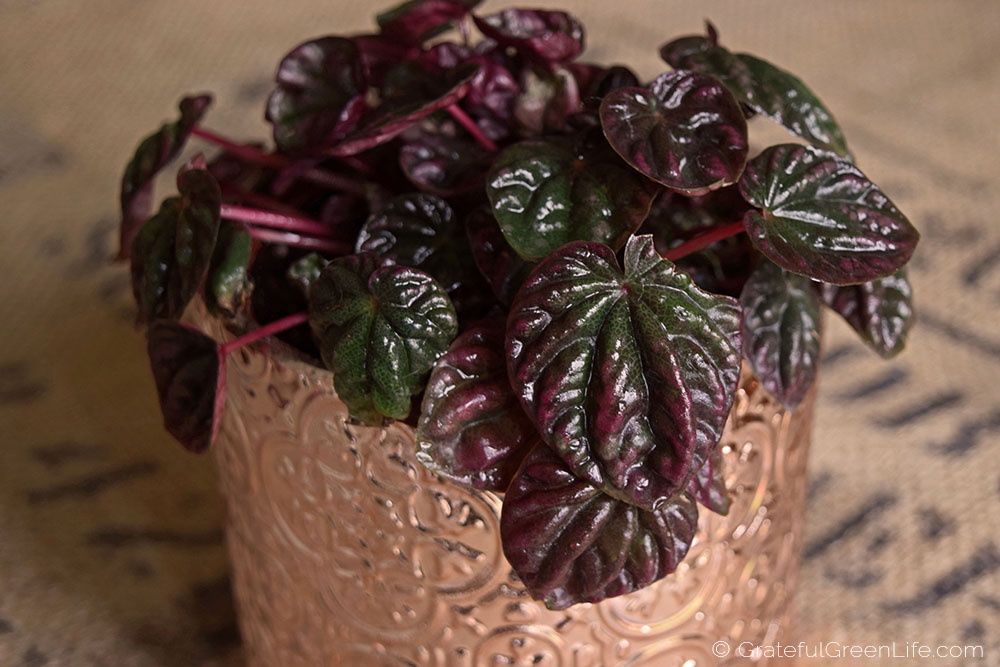
Peperomia (aka Radiator Plants) are a diverse genus of plant, which are easy-to-keep and generally remain very compact.
The Peperomia Caperata ‘Schumi Red’ pictured above, is a particularly popular variety, which is admired for it’s wonderfully thick, textured foliage.
This lovely little houseplant thrives best when kept in a bright spot, out of direct sunlight.
Because of its semi-succulent nature, this particular Peperomia also prefers to dry out between waterings, and is best watered from the bottom of the pot, to prevent the roots from rotting.
Calathea Louisae ‘Maui Queen’
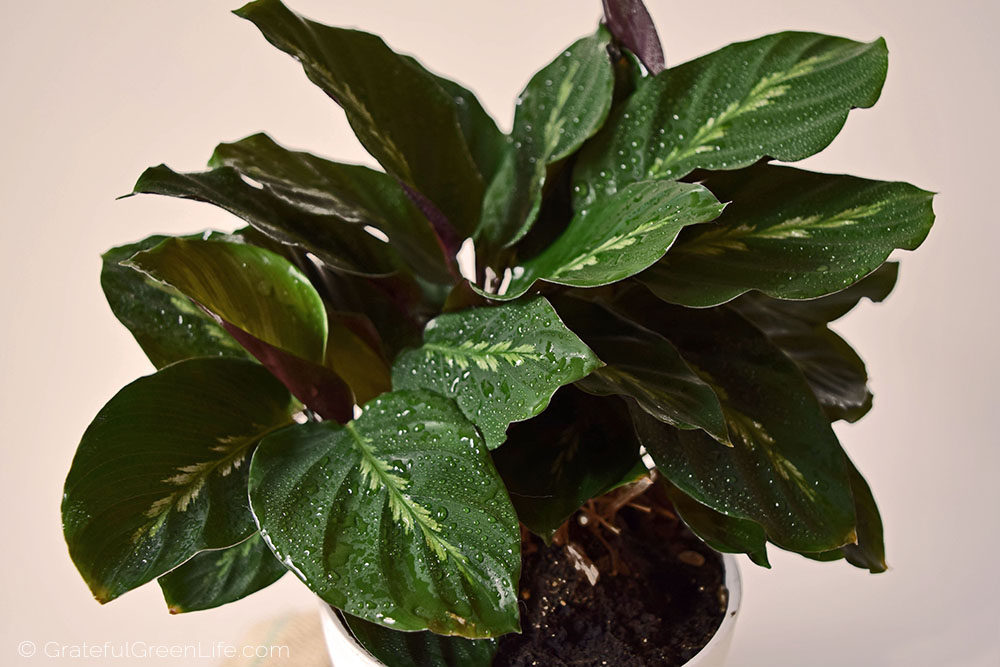
This majestic Maui Queen is a slightly taller variety of Calathea, which has a wonderful structure and really holds an elegant presence.
This fast-growing plant features a feathery pattern on its leaves, and likes to be kept in indirect light, with a little extra humidity.
Like many of the thinner-leaved Calatheas, this plant can be prone to spider mites, so be careful not to let your Maui Queen get overly dry or too dusty.
Stromanthe Sanguinea Triostar

And finally, the star of the show is the Stromanthe Sanguinea Triostar!
This breathtakingly beautiful plant grows absolutely abundantly and has the most amazing variegation!
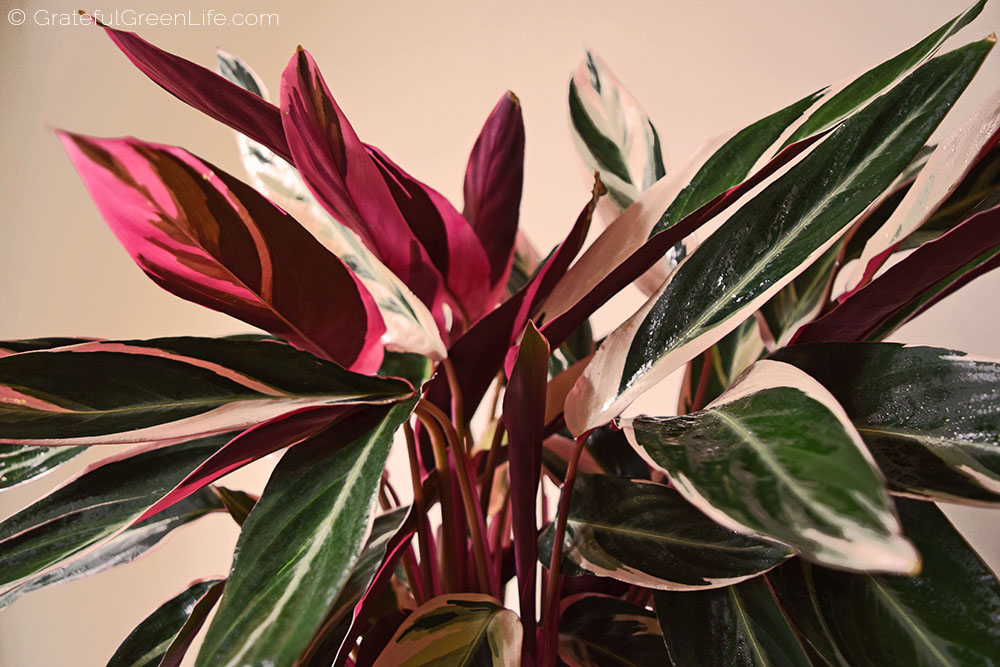
The underside of the leaves are dark pink, which shows through the variegation on the top of the leaves – and when the light catches this plant, your whole room will be aglow!
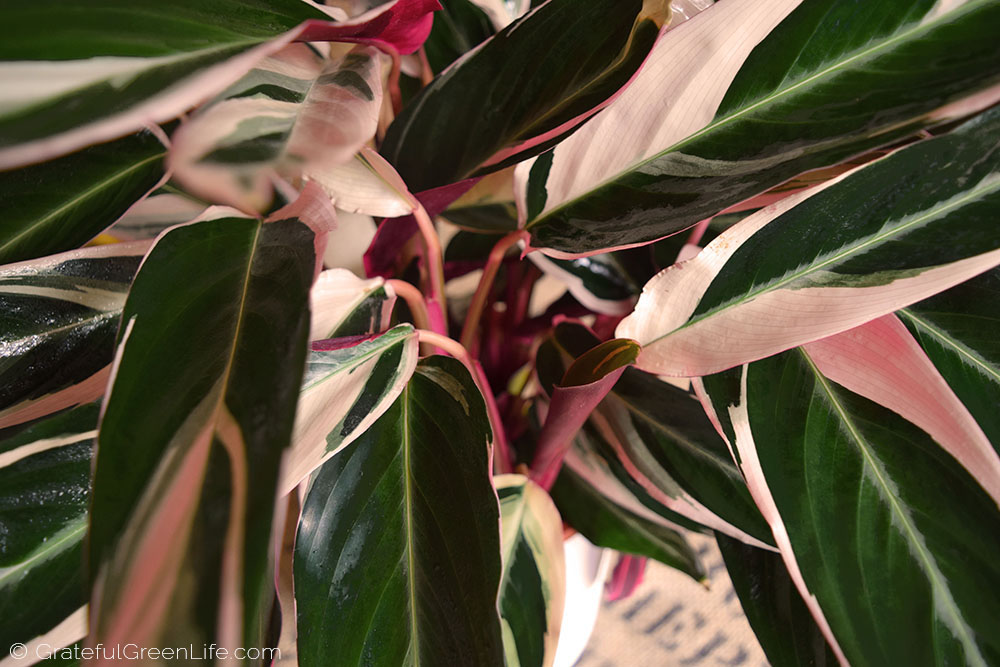
This plant loves indirect light and a little extra humidity, but is a little more sensitive to hard water, and being over-fertilised.
Although the leaves of this plant are its main attraction, if you can get this beauty to flower, you won’t be disappointed!
So there we have it – 10 beautiful, pet-friendly houseplants!
Which one’s your favourite, and do you already have (or are you planning to get) any of these plants for your home? I’d love to hear your thoughts!

This post contains affiliate links, which means I may receive a small commission for purchases made through certain links on this page (at no extra cost to you). Thank you so much for your support!



